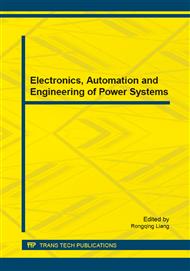p.543
p.548
p.554
p.558
p.562
p.568
p.572
p.577
p.581
Face Recognition by PCA and Improved LBP Fusion Algorithm
Abstract:
This paper proposed a theoretically efficient approach for face recognition based on principal component analysis (PCA) and rotation invariant uniform local binary pattern texture features in order to weaken the effects of varying illumination conditions and facial expressions. Firstly, the rotation invariant uniform LBP operator was adopted to extract the local texture feature of the face images. Then PCA method was used to reduce the dimensionality of the extracted feature and get the eigenfaces. Finally, the nearest distance classification was used to distinguish each face. The method has been accessed on Yale and ATR-Jaffe face databases. Results demonstrate that the proposed method is superior to standard PCA and its recognition rate is higher than the traditional PCA. And the proposed algorithm has strong robustness against the illumination changes, pose, rotation and expressions.
Info:
Periodical:
Pages:
562-567
Citation:
Online since:
February 2015
Authors:
Price:
Сopyright:
© 2015 Trans Tech Publications Ltd. All Rights Reserved
Share:
Citation:


